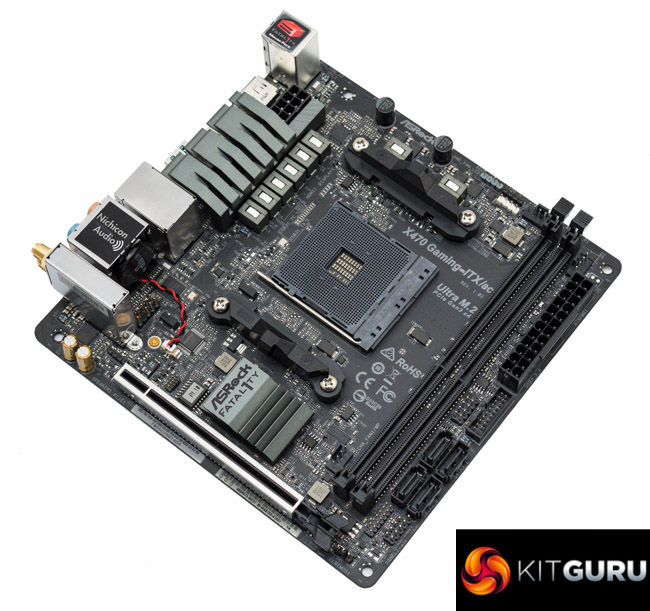The range of mini-ITX motherboards currently available for AMD's AM4 socket is still dominated by previous generation products based on the X370 and B350 chipsets while the range of newer X470-based solutions is limited. That said the differences between many of these AM4 motherboards using X370 and X470 is limited at best and all will support 1000- and 2000-series Ryzen CPUs with the appropriate BIOS updates.
B350 and the soon to be released B450 have a few more limitations, but ultimately the B450 version of this motherboard, once released, will be a better buy for users not requiring any of the unique features of the X470 chipset.
ASRock's Fatal1ty X470 Gaming-ITX/ac is therefore in competition with both current and prior chipset models given the functional similarities and ASRock had to raise the bar with its X470 ITX motherboard to convince consumers to part with more cash.
It certainly did so by upgrading the integrated WiFi to a 1733Mbps unit, adding USB 3.1 10Gbps USB ports including type-C, offering more RGB headers and improving the integrated display outputs to include DisplayPort as well as HDMI 2.0.
Elsewhere this motherboard remains fairly similar to its X370 predecessor but the above improvements do enough to warrant considering the new model for its additional connectivity and overall flexibility. However, prospective buyers not requiring any of the improvements would be wise to consider the previous X370 model for its lower price point.

There are certain aspects that could do with improvement, particularly the CPU VRM design which is adequate with 3 phases using double MOSFETs and inductors, for the CPU and the heatsink provided to cool this CPU VRM is modest.
There is no heatsink for the SOC VRM meaning APU buyers should be cautious, particularly when overclocking. That said the overall quality of components used, in terms of inductors (chokes), MOSFETs and capacitors, is still very good.
There were some compatibility issues with the USB 3.1 port during testing which was disappointing and meant that we were not able to validate the full bandwidth available from USB 3.1 in our benchmarking. A final note is that the absence of dual M.2 or an M.2 cooling solution make the M.2 capabilities of this motherboard fairly average.
There are better equipped X370 and X470 mini-ITX motherboards out there, mostly from ASUS and with a higher cost, as well as more affordable B350 and B450 options that are surprisingly similar and effectively undercut mini-ITX motherboards in the X370 and X470 space.
For the platform-agnostic consumer, there are also mini-ITX options for Intel's Z370 platform to consider. However, as a route into AMD's AM4 platform this X470 mini-ITX motherboard should meet the needs of most users and delivers a lot of performance for the money.
The ASRock Fatal1ty X470 Gaming-ITX/ac has a retail price of £165.99 in the UK and is sold with a 2 year warranty as standard.
In the USA it can be had for $210 at Amazon and $180 at Newegg and usually has a 2 year warranty.
Pros:
- Intel 1733Mbps 802.11ac WiFi Module with Bluetooth v5.0
- Good value proposition
- Two RGB headers
- 32Gbps M.2
- USB 3.1 Type-A and -C
- Good all-round performance and hassle-free overclocking
Cons:
- 3 phase VRM is not as good as some competitor ITX solutions
- Small CPU VRM heatsink, no SOC VRM heatsink
- USB 3.1 compatibility issues
- No dual M.2 or M.2 cooling
- Lack of onboard RGB lighting
- B450 equivalent will likely be a better buy
KitGuru says: ASRock's Fatal1ty X470 Gaming-ITX/ac is a solid mini-ITX offering for AMD's new X470 chipset. However, it needs some improvements to compete better with equivalent motherboards from rival vendors and Intel Z370-based alternatives.
 KitGuru KitGuru.net – Tech News | Hardware News | Hardware Reviews | IOS | Mobile | Gaming | Graphics Cards
KitGuru KitGuru.net – Tech News | Hardware News | Hardware Reviews | IOS | Mobile | Gaming | Graphics Cards



